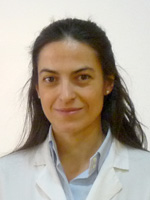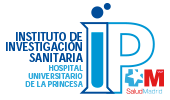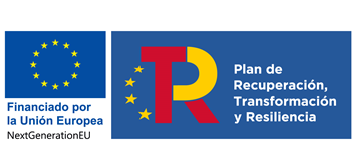Cellular and molecular responses to hypoxia
Group Information
Our group researches mitochondrial function in cells and its involvement in the development of pathological conditions. Uncoupling proteins (UCPs) have been found to be involved in the control of mitochondrial production of reactive oxygen species (ROS) and in protection against oxidative stress. Given that oxidative stress is an underlying feature in a wide range of pathophysiological processes, UCPs are potentially major targets for drugs.
Determining the molecular pathways that control its expression and activity is essential in developing strategies to modulate its function. An efficient response to oxidative damage is crucial for cell survival, and Nrf2 (factor 2 related with erythroid-derived 2) is an essential transcription factor that regulates the expression of various antioxidant genes by joining the antioxidant response element (ARE) and plays an essential role in cell defence against oxidative stress.
Among several pathologies related to oxidative stress, we are particularly interested in cardiac ischemia-reperfusion injury (IR). Reperfusion of an ischemic myocardium results in excessive ROS production, which may lead to tissue damage.
Lines of Research.
The group pursues three fundamental lines of research.
1.- Regulation of UCP3 expression and function by oxidative stress. Treatment with hydrogen peroxide (H2O2) has been found to induce UCP3 expression in the heart and skeletal muscle cells of mice. This effect is mediated by Nrf2 transcription factor. We have also shown that positive UCP3 regulation is accompanied by increased conductivity for inner mitochondria membrane protons, which translates into a decrease in mitochondrial ROS production and, consequently, increased cell survival. We are currently researching the effects of 4-hydroxy-2-nonenal lipid peroxidation in UCP3 expression and its functional consequences.
2.- The protective role of UCP3 against IR injury and its involvement in ischemic preconditioning (IPC). We have detected increased nuclear accumulation of Nrf2 and UCP3 in intact mice hearts subjected to IR, a condition known to increase ROS generation. We are currently researching the potential protective role of UCP3 against IR injury and its involvement in IPC in isolated and perfused mouse hearts.
3.- The involvement of Nrf2 in IPC. There is experimental evidence that shows that Nrf2 activation protects against IR injury. By using Nrf2 activators and Nrf2 "knockout" mice, we will study the role of this factor in IPC and the molecular mechanisms involved. In addition, we have established a collaboration with heart surgeons to study the molecular and cellular alterations that occur in an ischemic human heart.
Team members

Group leader: Susana Cadenas Álvarez Universidad Autónoma de Madrid-Molecular Biology Institute |
Other team members:
|
Cadenas Álvarez, Susana. MITALAB: Mitochondria and its involvement in human pathology. S2010/BMD-2402. CAM. 2012-2015.
Aguirre E, López-Bernardo E, Cadenas S. Functional evidence for nitric oxide production by skeletal-muscle mitochondria from lipopolysaccharide-treated mice. MITOCHONDRION 2012. 12: 126-131. FI: 4.025(Q2). PMID: 21664300. DOI: 10.1016/j.mito.2011.05.010.
Cadenas S, Aragonés J, Landázuri MO. Mitochondrial reprogramming through cardiac oxygen sensors in ischaemic heart disease. Cardiovasc Res 2010. 88: 219-228. FI: 6.051(Q1). PMID: 20679415. DOI: 10.1093/cvr/cvq256.
Aguirre E, Cadenas S. GDP and carboxyatractylate inhibit 4-hydroxynonenal-activated proton conductance to differing degrees in mitochondria from skeletal muscle and heart. Biochem. Biophys. Acta-Bioenerg. 2010. 1797: 1716-1726. FI: 5.132(Q1). PMID: 20599679. DOI: 10.1016/j.bbabio.2010.06.009.
Aguirre E, Rodríguez-Juárez F, Bellelli A, Gnaiger E, Cadenas S. Kinetic model of the inhibition of respiration by endogenous nitric oxide in intact cells. Biochem. Biophys. Acta-Bioenerg. 2010. 1797: 557-565. FI: 5.132(Q1). PMID: 20144583. DOI: 10.1016/j.bbabio.2010.01.033









